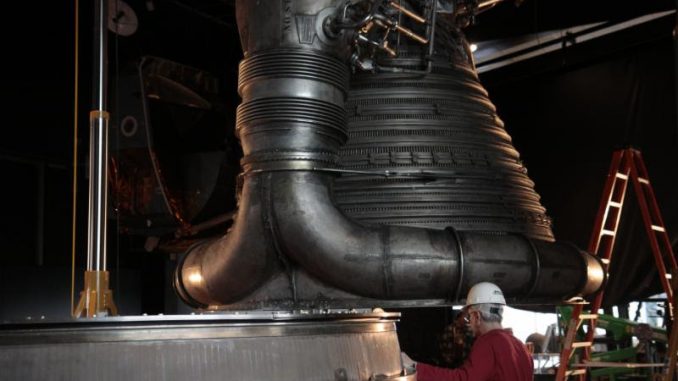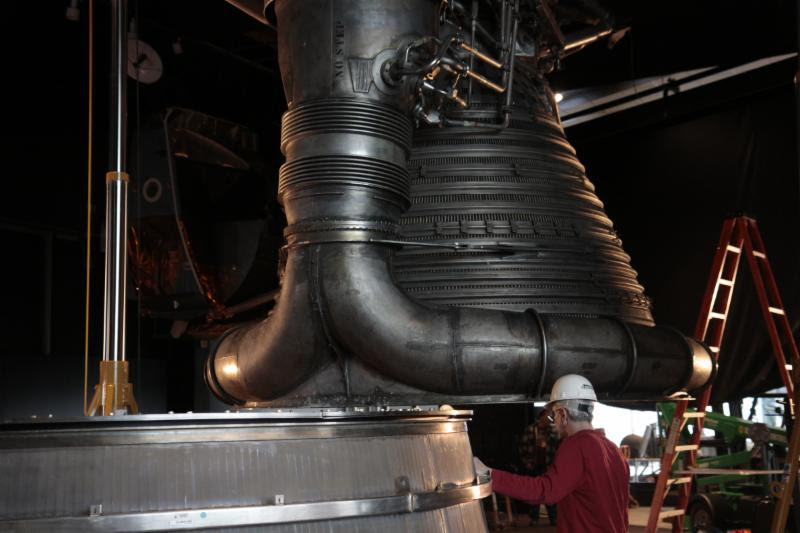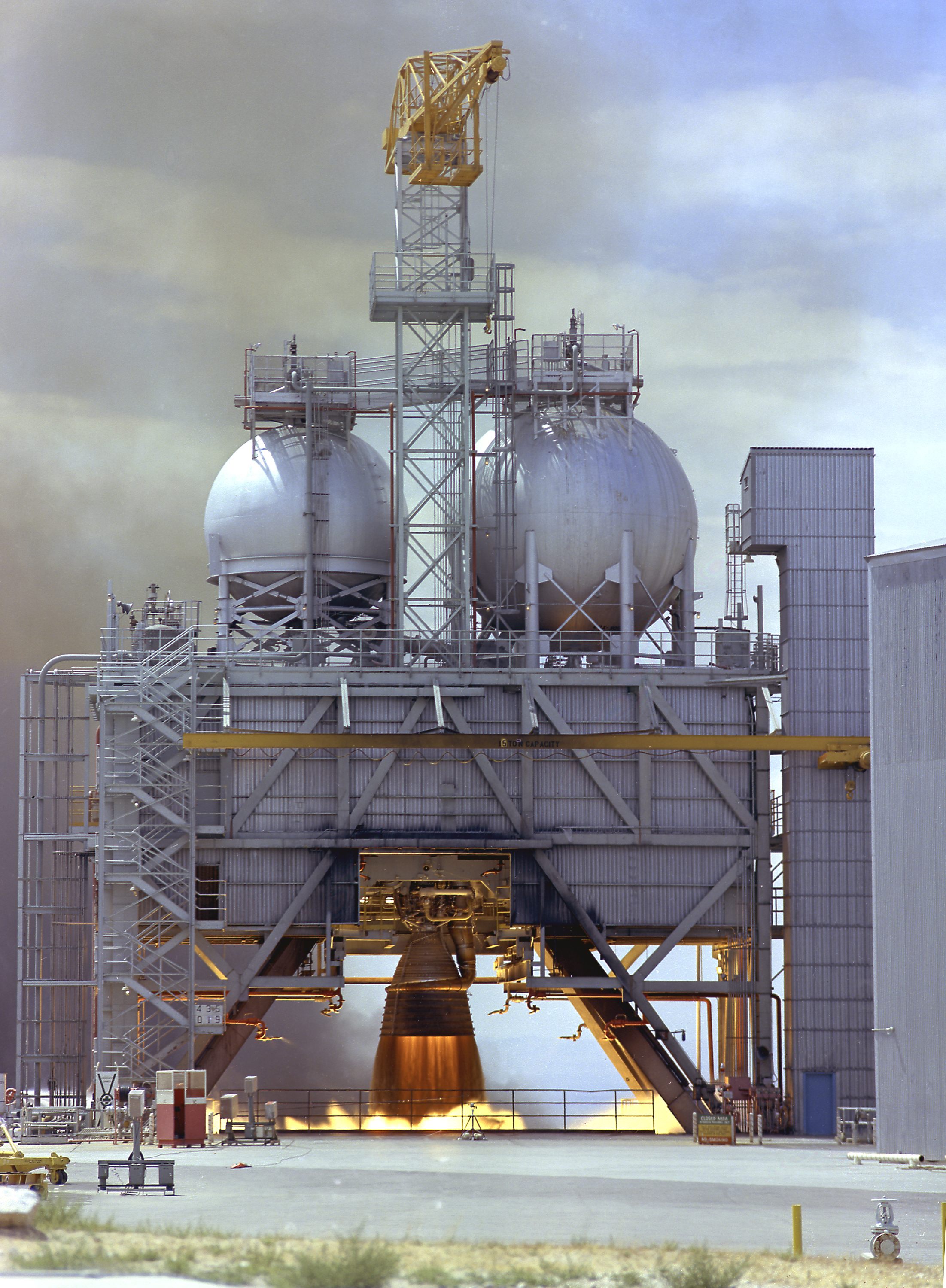

Last week the Museum of Flight received a special delivery– a full-scale F-1 rocket engine, received on loan from the NASA Marshall Space Flight Center. The F-1 engine remains the most powerful single-nozzle, liquid-fueled rocket engine ever developed. Standing 19 feet tall and 12 feet wide, the installation was a careful and collaborative effort by the Museum’s Exhibits and Facilities team and outside operations. Museum Trustee Charlie Lyford and his team were instrumental in the storage, preparation, engineering, transport and on-site installation of the engine. It was a technical feat to maneuver the beast into the vertical position, but after two days of teamwork and heavy duty hydraulic lifts, the mighty engine was properly mounted in the APOLLO gallery.
This massive artifact is a compelling focal point of the Museum’s upcoming APOLLO exhibit which opens on May 20. A story of individuals taming powerful new technologies to fulfill impossible dreams, the exhibit illustrates the American and Soviet “Space Race” to the Moon during the 1960s. The exhibit will also be the first public display of the long-lost rocket engines that launched the Apollo astronauts to the Moon.

The historic Apollo 12 and 16 F-1 engines that boosted the might Saturn V Moon rockets were lost at the bottom of the sea for 43 years until discovered and raised by Seattle-based Bezos Expeditions in 2013. The sunken remains were our last missing links to the first adventures to another world. The aged and sculptural artifacts still show the scars of their service and of resting in the depths. They will now solemnly punctuate the Museum’s new exhibit about the dramatic adventure of spaceflight through the post-Apollo ebb in the 1970s.
The exhibit will also feature many other unique artifacts from the Space Race, including Moon rocks, a lunar roving “moon buggy,” the only Viking Mars lander on Earth, space suits and the first Apollo spacecraft. The Museum’s existing Charles Simonyi Space Gallery on the West Campus will continue with the story of the space shuttle, plus the latest in current and future spaceflight.



There was a F-1 engine on static display in front of Rocketdyne’s offices in Canoga Park, CA. What happened to it after that facility closed is a mystery.